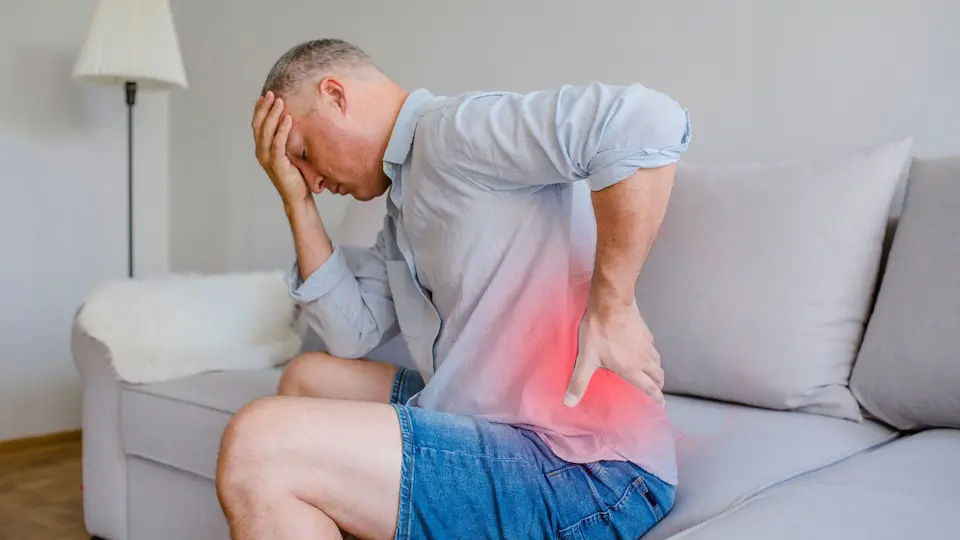Understanding Lower Back Pain When Bending Over
Lower back pain is a prevalent medical condition that affects people of all ages and backgrounds. It is estimated that up to 80% of adults experience lower back pain when bending over at some point in their lives, making it one of the leading causes of disability worldwide. The significance of this condition goes beyond physical discomfort, muscle spasms, and severe pain, as it can have a profound impact on individuals’ daily lives, limiting their mobility, productivity, and overall well-being.
The lower back, or lumbar region, plays a crucial role in supporting the body’s weight and facilitating movement. However, it is also susceptible to various injuries and degenerative changes that can lead to chronic pain, especially when bending over.
Understanding the intricate anatomy of the lower back, the interplay between muscles, bones, and ligaments, and the role of the spine in back pain is essential to effectively address and manage this condition.
Anatomy of the Lower Back
The lower back consists of five lumbar vertebrae (L1-L5) that are stacked on top of each other. Between these vertebrae are intervertebral discs, which act as shock absorbers and provide flexibility to the spine. The facet joints, located on the back of each vertebra, enable movement and stability. Surrounding the vertebrae are muscles and ligaments that provide support and stability to the spine.
The Interplay Between Muscles, Bones, and Ligaments
The stability and flexibility of the lower back depend on the coordinated efforts of muscles, bones, and ligaments. The core muscles, including the abdominals and back muscles, are particularly vital for maintaining proper alignment and preventing injuries. Ligaments, which connect bones to other bones, help support the spine during movement.
Joint stability and flexibility are essential aspects of lower back health. Studies have shown that an imbalance in these factors or lumbar instability can lead to an increased risk of injuries and chronic pain when bending over.
The Role of the Spine in Back Pain
The spine’s intricate structure can be both a source of strength and vulnerability. When the lower back is subjected to excessive stress, poor posture, or age-related wear and tear, various structures can be affected, leading to pain and discomfort. Herniated discs, spinal stenosis, stress fracture, and degenerative disc disease are some of the conditions that can cause lower back pain, particularly when bending over.
Common Causes of Lower Back Pain
Lower back pain can arise from various factors, and understanding these causes is essential for accurate diagnosis and effective treatment. Let’s explore some of the most common culprits for causing pain:
Muscle Strains and Sprains: Overexertion, sudden movements, or improper lifting techniques can cause strains or sprains in the back muscles, leading to acute pain.
Herniated Discs: When the gel-like center of an intervertebral disc protrudes and presses on a spinal nerve, the herniated disc can cause sharp pain and discomfort, especially during bending movements.
Spinal Stenosis: The narrowing of the spinal canal can compress the spinal cord and nerves, leading to pain, numbness, and weakness in the lower back and legs. These symptoms tend to warrant immediate medical attention.
Degenerative Disc Disease: As the intervertebral discs naturally degenerate with age, they can lose their cushioning properties, causing chronic pain and stiffness.

Ergonomics and Proper Body Mechanics
Maintaining proper body mechanics and ergonomic practices is crucial for preventing lower back pain, especially when bending over.
- Promote a healthy back through posture awareness
- Observe proper lifting and bending techniques
- Ensure your workspaces and furniture are ergonomically designed for health and comfort during prolonged sitting or standing
- Encourage regular breaks and physical activity (avoid a sedentary lifestyle)
- Avoid obesity with proper weight management planning
- Manage stress through relaxation techniques and mindfulness
Diagnosis and Evaluation of Lower Back Pain
Accurate diagnosis is fundamental for tailoring effective treatment plans for lower back pain. Employing medical assessments, imaging techniques, and physical examinations are essential steps in this process.
Moreover, a comprehensive medical assessment, including a detailed medical history and physical examination, is essential for identifying the potential cause of severe back pain. Thorough physical examinations, including neurological and orthopedic tests, help determine the presence of muscle weakness, sensory changes, or joint abnormalities that may be contributing to back pain.
Treatment Options for Lower Back Pain
Non-surgical and surgical interventions are available for the treatment of lower back pain, and the selection of the appropriate approach depends on the specific cause and severity of the condition. In cases where lower back pain is chronic with no relief in sight, ReActiv8® might be the answer. It is safe, minimally invasive, and has been proven to provide long-lasting relief from chronic lower back pain.
Disclaimer : This article is for general information purposes only, and does not contain any medical advice, opinion, or recommendations. Before trying any new exercise, physical activity, therapy, or treatment, you should always consult with a physician or other health care professional to ensure that the new activity is appropriate for you.